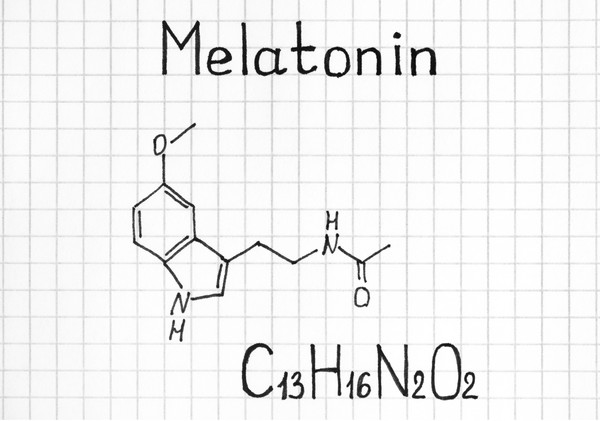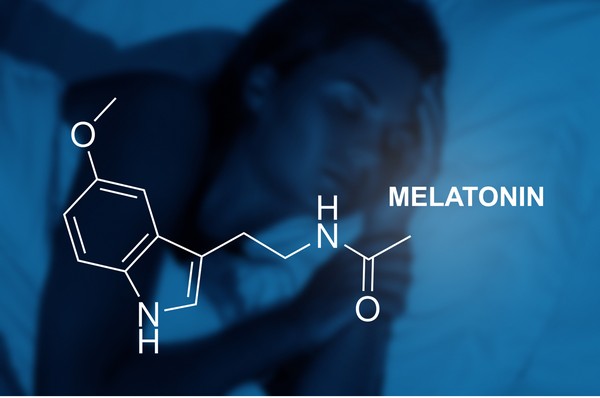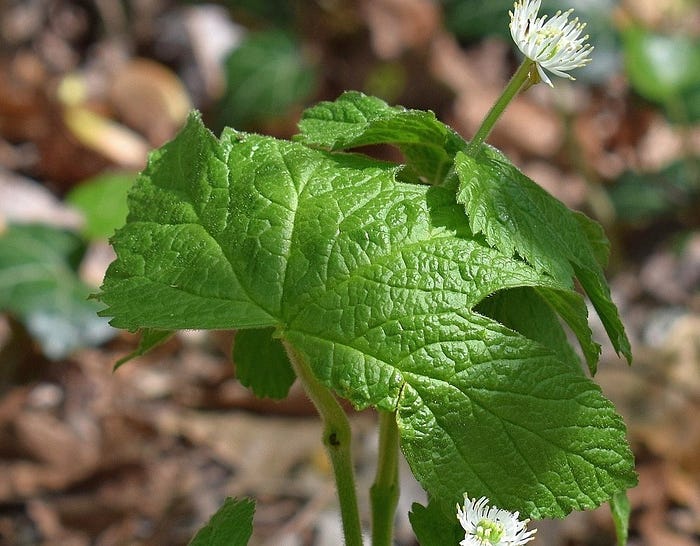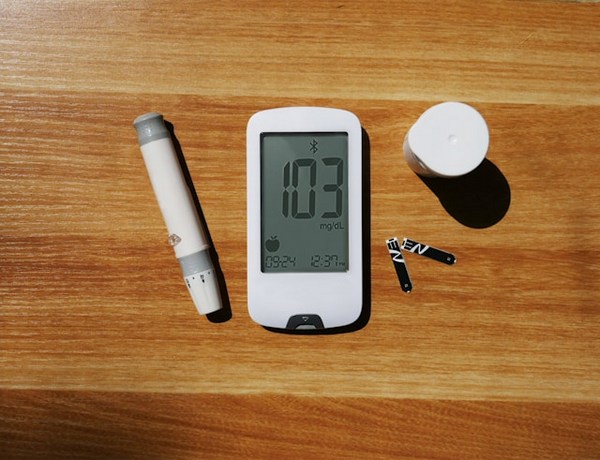Key Takeaways
- Melatonin helps regulate sleep-wake cycles, signaling the body to rest as it gets dark.
- It acts as an antioxidant, protecting cells from damage.
- Melatonin supplements are used to improve sleep quality, manage jet lag, and support mood.
- Overuse of melatonin supplements can lead to dependency and potential hormonal imbalances.

Melatonin is a hormone produced by the pineal gland, primarily responsible for regulating the body’s sleep-wake cycles.
Functions of Melatonin
Melatonin’s main function is to regulate the body’s internal clock, helping to maintain a regular sleep-wake pattern. It increases as darkness falls, signaling the body to prepare for sleep.
Additionally, melatonin serves as an antioxidant, helping to protect cells from oxidative stress and damage.
It also influences the immune system and reproductive health.
Sources of Melatonin

The body naturally produces melatonin, especially in response to light and darkness. This is by far the best way to get melatonin.
Individuals should try to get as much sunlight as possible in the first half of the day and avoid exposure to blue light later in the evening.
Additionally some foods contain melatonin such as;
- Eggs
- Fish
- Pistachios
- Cherries
- Walnuts
Benefits of Melatonin
| Function | Description |
|---|---|
| Regulation of Sleep-Wake Cycles | Melatonin signals the body when it’s time to sleep, naturally increasing in response to darkness, helping maintain a regular sleep pattern. |
| Antioxidant Activity | As an antioxidant, melatonin protects cells from damage caused by free radicals, supporting overall health and cellular function. |
| Immune System Support | Melatonin boosts immune cell activity, strengthening the body’s defenses against infections and reducing inflammation. |
| Reproductive Hormone Regulation | Melatonin affects menstrual cycles and ovulation, influencing fertility and reproductive health in women. |
| Mood Regulation | Melatonin interacts with serotonin, helping to stabilize mood, particularly in conditions like seasonal affective disorder (SAD). |
| Cardiovascular Protection | Melatonin helps regulate blood pressure, potentially lowering hypertension risk and promoting heart health. |
| Neuroprotective Effects | Melatonin protects neurons from damage, which may slow the progression of neurodegenerative diseases like Alzheimer’s. |
| Regulation of Body Temperature | Melatonin lowers body temperature slightly before sleep, aiding the natural process of falling asleep. |
| Anti-Inflammatory Effects | Melatonin reduces chronic inflammation, helping to manage inflammatory conditions such as arthritis. |
| Anti-Cancer Potential | Melatonin may slow the growth of certain cancer cells and improve the effectiveness of treatments like chemotherapy. |
| Digestive System Regulation | Melatonin supports gut health by regulating digestive motility and enzyme secretion, contributing to overall digestive well-being. |
| Influence on Aging | As melatonin levels decline with age, maintaining them may help slow down cognitive decline and other aging processes. |
Melatonin and Health Conditions

Melatonin is often recommended for sleep-related issues, including insomnia and delayed sleep phase disorder.
Ongoing research is exploring its potential benefits in neurological conditions, cardiovascular health, and even cancer prevention.
Melatonin Supplements
Melatonin supplements are available in a variety of forms and dosages. While generally safe, they can cause side effects like dizziness or daytime drowsiness in some individuals.
Only use these supplements under the guidance of a healthcare provider, especially for children, pregnant women, and older adults, to avoid potential risks or dependency.
Controversies and Misconceptions

Melatonin is sometimes mistakenly viewed as a universal remedy for sleep issues. Overusing melatonin supplements can lead to dependency and reduced effectiveness over time.
It is much better to figure out and fix the cause of poor sleep than to use a quick-fix crutch, while ignoring the underlying unresolved problem.
There is also debate about the long-term effects of melatonin use, particularly regarding its impact on hormonal balance.
Comparing Melatonin with Other Sleep Aids
Melatonin offers an alternative to prescription sleep medications and herbal sleep aids.
Unlike some other options, melatonin directly influences the body’s circadian rhythm. However, it may not be as effective for severe sleep disorders.
Conclusion
Melatonin plays a key role in regulating sleep and supporting various bodily functions. While melatonin supplements can be beneficial for managing sleep disturbances and other health concerns, they should not be used. As research continues, the understanding of melatonin’s benefits and potential risks will become clearer.
FAQs
How much melatonin should I take for sleep?
Dependence on melatonin pills for sleep is not recommended. Focus on the numerous options for improving sleep quality.
Can melatonin cause side effects?
Some individuals may experience dizziness, headaches, or daytime drowsiness. Finding the right dosage and consulting with a healthcare provider is important.
Is melatonin safe for children?
Consult a pediatrician before use, as the long-term effects are not fully known.
Can I take melatonin every night?
While occasional use is generally safe, nightly use over a long period should be discussed with a healthcare provider to avoid potential dependency or hormonal imbalances.
Does melatonin interact with other medications?
Yes, melatonin can interact with certain medications, including blood thinners and diabetes treatments. Always consult a healthcare provider before combining it with other therapies.
Research
Angeles, M., Jose, M., Reiter, R., Hardeland, R., Rol, M. A., & Madrid, J. A. (2014). Protecting the Melatonin Rhythm through Circadian Healthy Light Exposure. International Journal of Molecular Sciences, 15(12), 23448-23500. https://doi.org/10.3390/ijms151223448
Anisimov, V.N., Popovich, I.G., Zabezhinski, M.A., Anisimov, S.V., Vesnushkin, G.M. and Vinogradova, I.A., 2006. Melatonin as antioxidant, geroprotector and anticarcinogen. Biochimica et Biophysica Acta (BBA) - Bioenergetics, [online] 1757(5–6), pp.573–589.
https://doi.org/10.1016/j.bbabio.2006.03.012.
Ansari, M., Rafiee, Kh., Yasa, N., Vardasbi, S., Naimi, S.M. and Nowrouzi, A., 2010. Measurement of melatonin in alcoholic and hot water extracts of Tanacetum parthenium, Tripleurospermum disciforme and Viola odorata. Daru, [online] 18(3), pp.173–178. PMID: 22615614; PMCID: PMC3304366.
Arendt, J. and Skene, D.J., 2005. Melatonin as a chronobiotic. Sleep Medicine Reviews, [online] 9(1), pp.25–39. [doi:10.1016/j.smrv.2004.05.002](https://doi.org/10.1016/j.smrv.2004.05.002).
Arendt, J., Aldhous, M. and Marks, V., 1986. Alleviation of jet lag by melatonin: preliminary results of controlled double blind trial. BMJ, [online] 292(6529), pp.1170–1170. [doi:10.1136/bmj.292.6529.1170](https://doi.org/10.1136/bmj.292.6529.1170).
Berga, S.L. and Yen, S.S.C., 1990. Circadian Pattern of Plasma Melatonin Concentrations during Four Phases of the Human Menstrual Cycle. Neuroendocrinology, [online] 51(5), pp.606–612. [doi:10.1159/000125398](https://doi.org/10.1159/000125398).
Dollins, A.B., Zhdanova, I.V., Wurtman, R.J., Lynch, H.J. and Deng, M.H., 1994. Effect of inducing nocturnal serum melatonin concentrations in daytime on sleep, mood, body temperature, and performance. Proceedings of the National Academy of Sciences, [online] 91(5), pp.1824–1828. [doi:10.1073/pnas.91.5.1824](https://doi.org/10.1073/pnas.91.5.1824).
Ebisawa, T., Karne, S., Lerner, M.R. and Reppert, S.M., 1994. Expression cloning of a high-affinity melatonin receptor from Xenopus dermal melanophores. Proceedings of the National Academy of Sciences, [online] 91(13), pp.6133–6137. [doi:10.1073/pnas.91.13.6133](https://doi.org/10.1073/pnas.91.13.6133).
Ferry, G., Ubeaud, C., Lambert, P.-H., Bertin, S., Cogé, F., Chomarat, P., Delagrange, P., Serkiz, B., Bouchet, J.-P., Truscott, R.J.W. and Boutin, J.A., 2005. Molecular evidence that melatonin is enzymatically oxidized in a different manner than tryptophan: investigations with both indoleamine 2,3-dioxygenase and myeloperoxidase. Biochemical Journal, [online] 388(1), pp.205–215. [doi:10.1042/bj20042075](https://doi.org/10.1042/bj20042075).
Fu, L., Xu, B.-T., Xu, X.-R., Qin, X.-S., Gan, R.-Y. and Li, H.-B., 2010. Antioxidant Capacities and Total Phenolic Contents of 56 Wild Fruits from South China. Molecules, [online] 15(12), pp.8602–8617. [doi:10.3390/molecules15128602](https://doi.org/10.3390/molecules15128602).
Grivas, T.B. and Savvidou, O.D., 2007. Melatonin the ‘light of night’ in human biology and adolescent idiopathic scoliosis. Scoliosis, [online] 2(1). [doi:10.1186/1748-7161-2-6](https://doi.org/10.1186/1748-7161-2-6).
Haimov, I., Laudon, M., Zisapel, N., Souroujon, M., Nof, D., Shlitner, A., Herer, P., Tzischinsky, O. and Lavie, P., 1994. Sleep disorders and melatonin rhythms in elderly people. BMJ, [online] 309(6948), pp.167–167. [doi:10.1136/bmj.309.6948.167](https://doi.org/10.1136/bmj.309.6948.167).
Hardeland, R. and Pandi-Perumal, S., 2005. Melatonin, a potent agent in antioxidative defense: Actions as a natural food constituent, gastrointestinal factor, drug and prodrug. Nutrition & Metabolism, [online] 2(1). [doi:10.1186/1743-7075-2-22](https://doi.org/10.1186/1743-7075-2-22).
Holmes, S.W. and Sugden, D., 1976. Proceedings: The effect of melatonin on pinealectomy-induced hypertension in the rat. British Journal of Pharmacology, 56(3), pp.360P. [doi:10.1111/j.1476-5381.1976.tb08383.x](https://doi.org/10.1111/j.1476-5381.1976.tb08383.x).
Jean-Louis, G., Kripke, D.F., Elliott, J.A., Zizi, F., Wolintz, A.H. and Lazzaro, D.R., 2005. Daily illumination exposure and melatonin: influence of ophthalmic dysfunction and sleep duration. Journal of Circadian Rhythms, [online] 3(0), p.13. [doi:10.1186/1740-3391-3-13](https://doi.org/10.1186/1740-3391-3-13).
Karunanithi, D., Radhakrishna, A., Sivaraman, K.P. and Biju, V.M.N., 2013. Quantitative determination of melatonin in milk by LC-MS/MS. Journal of Food Science and Technology, [online] 51(4), pp.805–812. [doi:10.1007/s13197-013-1221-6](https://doi.org/10.1007/s13197-013-1221-6).
Lewy, A.J., 2007. Melatonin and Human Chronobiology. Cold Spring Harbor Symposia on Quantitative Biology, [online] 72(1), pp.623–636. https://doi.org/10.1101/sqb.2007.72.055.
Li, A.-N., Li, S., Zhang, Y.-J., Xu, X.-R., Chen, Y.-M. and Li, H.-B., 2014. Resources and Biological Activities of Natural Polyphenols. Nutrients, [online] 6(12), pp.6020–6047. [doi:10.3390/nu6126020](https://doi.org/10.3390/nu6126020).
Lusardi, P., Piazza, E. and Fogari, R., 2000. Cardiovascular effects of melatonin in hypertensive patients well controlled by nifedipine: a 24-hour study. British Journal of Clinical Pharmacology, [online] 49(5), pp.423–427. [doi:10.1046/j.1365-2125.2000.00195.x](https://doi.org/10.1046/j.1365-2125.2000.00195.x).
Maddux, J.F. and Desmond, D.P., 2000. Addiction or dependence?. Addiction, [online] 95(5), pp.661–662. [doi:10.1046/j.1360-0443.2000.95566110.x](https://doi.org/10.1046/j.1360-0443.2000.95566110.x).
Mayo, J.C., Sainz, R.M., Antolín, I., Herrera, F., Martin, V. and Rodriguez, C., 2002. Melatonin regulation of antioxidant enzyme gene expression. Cellular and Molecular Life Sciences, [online] 59(10), pp.1706–1713. [doi:10.1007/pl00012498](https://doi.org/10.1007/pl00012498).
Meng, X., Li, Y., Li, S., Zhou, Y., Gan, R.-Y., Xu, D.-P. and Li, H.-B., 2017. Dietary Sources and Bioactivities of Melatonin. Nutrients, [online] 9(4), p.367.
https://doi.org/10.3390/nu9040367.
Mead, M.N., 2008. Benefits of Sunlight: A Bright Spot for Human Health. Environmental Health Perspectives, [online] 116(4). https://doi.org/10.1289/ehp.116-a160.
Nogueira, L.F.R., Crispim, C.A., Cipolla-Neto, J., de Castro Moreno, C.R. and Marqueze, E.C., 2022. The Effect of Exogenous Melatonin on Eating Habits of Female Night Workers with Excessive Weight. Nutrients, [online] 14(16), p.3420. [doi:10.3390/nu14163420](https://doi.org/10.3390/nu14163420).
Nogueira, L.F.R. and Marqueze, E.C., 2021. Effects of melatonin supplementation on eating habits and appetite-regulating hormones: a systematic review of randomized controlled clinical and preclinical trials. Chronobiology International, [online] 38(8), pp.1089–1102. [doi:10.1080/07420528.2021.1918143](https://doi.org/10.1080/07420528.2021.1918143).
Padumanonda, T., Johns, J., Sangkasat, A. and Tiyaworanant, S., 2014. Determination of melatonin content in traditional Thai herbal remedies used as sleeping aids. DARU Journal of Pharmaceutical Sciences, [online] 22(1).
https://doi.org/10.1186/2008-2231-22-6.
Pierpaoli, W. and Regelson, W., 1994. Pineal control of aging: effect of melatonin and pineal grafting on aging mice. Proceedings of the National Academy of Sciences, [online] 91(2), pp.787–791. [doi:10.1073/pnas.91.2.787](https://doi.org/10.1073/pnas.91.2.787).
Reppert, S.M., Godson, C., Mahle, C.D., Weaver, D.R., Slaugenhaupt, S.A. and Gusella, J.F., 1995. Molecular characterization of a second melatonin receptor expressed in human retina and brain: the Mel1b melatonin receptor. Proceedings of the National Academy of Sciences, [online] 92(19), pp.8734–8738. [doi:10.1073/pnas.92.19.8734](https://doi.org/10.1073/pnas.92.19.8734).
Singer, C., Tractenberg, R.E., Kaye, J., Schafer, K., Gamst, A., Grundman, M., Thomas, R. and Thal, L.J., 2003. A Multicenter, Placebo-controlled Trial of Melatonin for Sleep Disturbance in Alzheimer’s Disease. Sleep, [online] 26(7), pp.893–901. [doi:10.1093/sleep/26.7.893](https://doi.org/10.1093/sleep/26.7.893).
Touitou, Y., 2001. Human aging and melatonin. Clinical relevance. Experimental Gerontology, [online] 36(7), pp.1083–1100. [doi:10.1016/s0531-5565(01)00120-6](https://doi.org/10.1016/s0531-5565(01)00120-6).
Viswanathan, M., Laitinen, J.T. and Saavedra, J.M., 1990. Expression of melatonin receptors in arteries involved in thermoregulation. Proceedings of the National Academy of Sciences, [online] 87(16), pp.6200–6203. [doi:10.1073/pnas.87.16.6200](https://doi.org/10.1073/pnas.87.16.6200).
Wang, H., 2004. Protective effect of melatonin against liver injury in mice induced by Bacillus Calmette-Guerin plus lipopolysaccharide. World Journal of Gastroenterology, [online] 10(18), p.2690. [doi:10.3748/wjg.v10.i18.2690](https://doi.org/10.3748/wjg.v10.i18.2690).
Zhang, H., Akbar, M. and Kim, H.Y., 1999. Melatonin: An endogenous negative modulator of 12-lipoxygenation in the rat pineal gland. Biochemical Journal, 344(Pt 2), pp.487–493. [doi:10.1042/bj3440487](https://doi.org/10.1042/bj3440487).
Zhang, Y.-J., Gan, R.-Y., Li, S., Zhou, Y., Li, A.-N., Xu, D.-P. and Li, H.-B., 2015. Antioxidant Phytochemicals for the Prevention and Treatment of Chronic Diseases. Molecules, [online] 20(12), pp.21138–21156. [doi:10.3390/molecules201219753](https://doi.org/10.3390/molecules201219753).
Emotional Freedom Technique (EFT): Tap to relieve stress
Key Highlights Learn about the origins and principles of Emotional Freedom Technique (EFT) for stress relief. Understand the science-backed mechanisms of how EFT works on…
Fight, Flight, Freeze, Fawn: Stress Response Examined
Key Takeaways The stress response includes four primary reactions, each serving as a survival mechanism. The fight response involves confronting the threat, often with aggression…
Reduce Stress through Pet Therapy
Key Highlights Pet therapy, or animal-assisted therapy, boosts health. Interacting with animals lowers cortisol, blood pressure, and heart rate. Therapy, service, and companion animals are…






